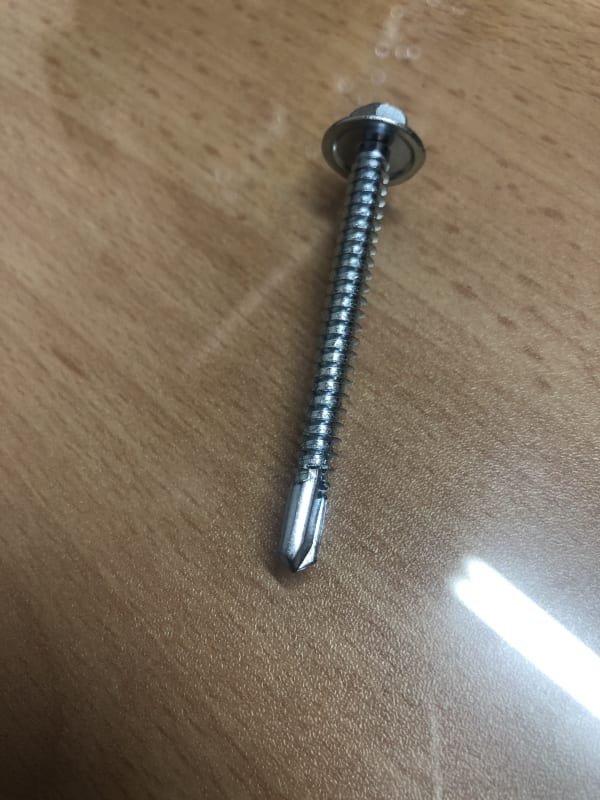J-G...
Part of the problem with Your design is that it needs-to-be 'self-drilling-and-thread-tapping'... Yet the screw appears to be ordinary 'self-drilling' for soft-metal/wood installation.
WHAT are You intending to install this fastener into: hard wood??? soft aluminum or low strength carbon steel??? or nickel alloys and titanium??? Etc?? The intended material to be fastened is a very IMPORTANT FACET OF THIS DISCUSSION.
In my humble opinion the drill-tip must be capable of drilling the 'starter/pilot hole' and clearing-away those 'chips'... and then...
The lead-in threads will be required to begin the process of tapping the hole... and then...
The remaining threads MUST be capable of clearing-away new-chips as tapping/insertion progresses.
Sooo…
The lead-in threads should probably 'look like' a hole-thread-tap... and the remaining thread should probably have a way of passing-out [or otherwise absorbing] the chips... possibly with spiral grooves cut thru the thread flanks [lengthwise] or some-other process. Without being abrasively destroyed in the process. My head hurts.
High strength low allow steels [almost tool-steel because of possible friction heating] are probably necessary... with either nitriding or a very hard surface coating such as IVD titanium Nitride to provide high temp friction/wear resistance.
Hmmmmmm… A high strength CRES with nitrogen-surface hardening + wear/abrasion coating... might also be suitable candidate material.
One last possibility is a fastener with fine/hardened threads that is installed in a conventionally drilled-hole that 'cold-works the based-metal hole-wall into a matching female thread-pattern'. This would require a fastener capable of sustained high torque loading during installation. My head still hurts.
Regards, Wil Taylor
o Trust - But Verify!
o We believe to be true what we prefer to be true. [Unknown]
o For those who believe, no proof is required; for those who cannot believe, no proof is possible. [variation,Stuart Chase]
o Unfortunately, in science what You 'believe' is irrelevant. ["Orion", Homebuiltairplanes.com forum]

